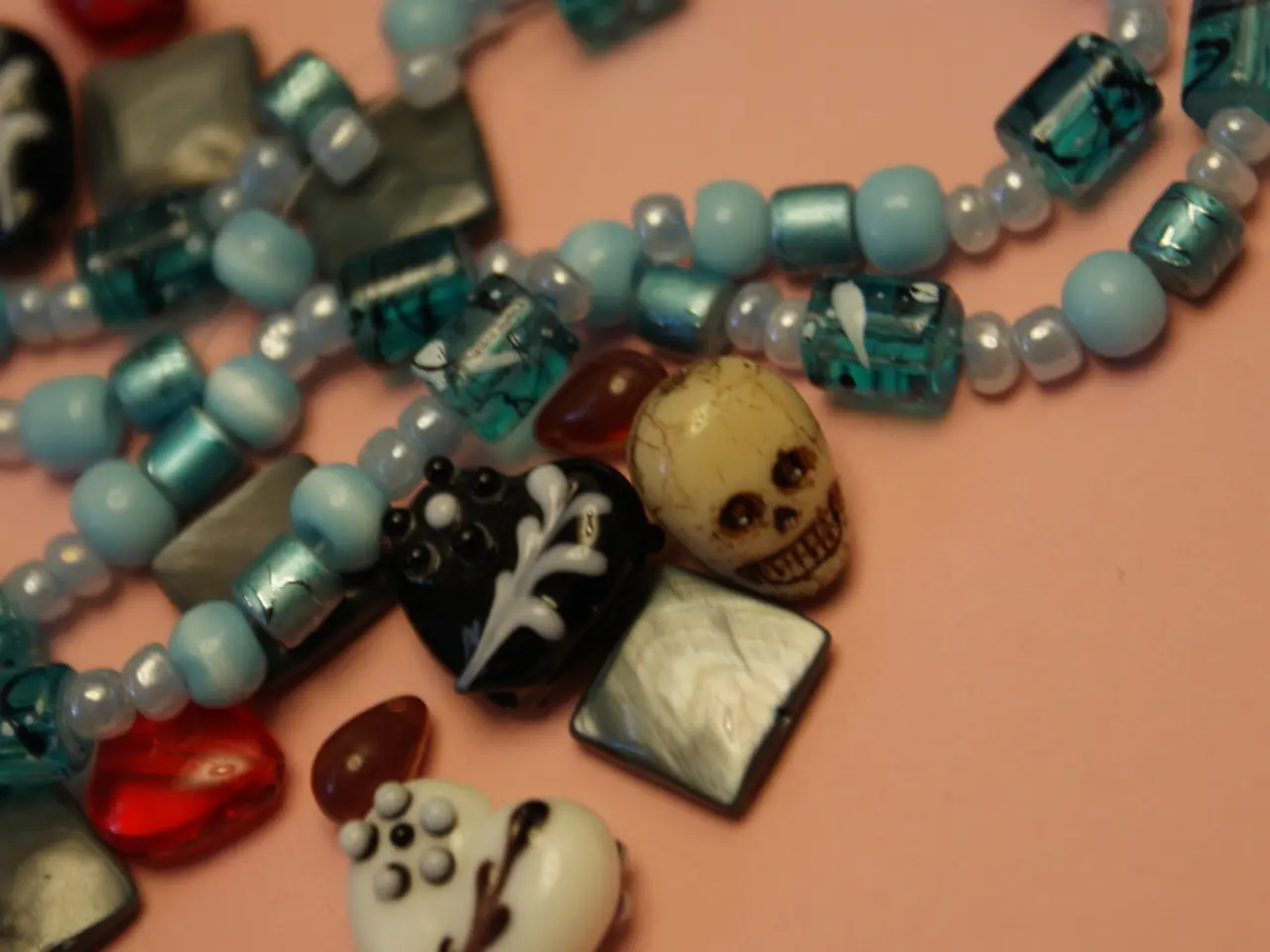Government negotiations for jewelry trade urged to be expedited promptly due to 50% tariffs
The US President, Donald Trump, announced an additional 25% tariff on Indian imports, including gold jewellery, on August 6. This move has significantly impacted India's competitiveness in its largest export market, threatening millions of domestic jobs, particularly in the handcrafted jewellery sector.
The total US tariff on Indian imports, including gold jewellery, now stands at 50%. This increase in tariffs makes Indian gold jewellery priced at $2,000 cost $3,000+ in the US, making it uncompetitive compared to similar products from countries with lower tariffs, such as the UAE, Vietnam, or Turkey.
The tariffs jeopardise the livelihoods of thousands of skilled artisans, many from marginalised communities, who depend on export demand for their survival. Rajesh Rokde, Chairman of All India Gem and Jewellery Domestic Council, stated that a 50% tariff threatens job losses, destabilises local economies, and risks eroding a rich cultural heritage.
The imposition of these tariffs renders Indian gold jewellery products significantly less competitive in the US market. As a result, the US, accounting for about 35% of India’s gem and jewellery exports ($10-11 billion annually), is reducing procurement from India. Buyers are pivoting to countries with lower tariffs, risking a long-term decline in India’s global market dominance in diamond processing, colored stones, and gold jewellery exports.
Indian exporters are actively seeking to offset the US tariff impact. They are shifting focus to alternative markets like the Gulf countries, Latin America, Southeast Asia, and Europe, leveraging trade agreements and cultural ties. Additionally, they are exploring integrated value chains by establishing manufacturing and retail operations in regional hubs such as the UAE to bypass tariffs and optimise costs.
The tariff increase may also raise domestic gold prices and weaken the rupee, reducing local demand for handcrafted jewellery and squeezing margins for artisans and traders.
The GoI (Government of India) released a statement accusing the US and Europe of keeping Russian imports while pressuring India to stop buying oil from Moscow. The ongoing tariff tensions between India and the USA continue to pose challenges for the Indian jewellery industry.
President Trump has alluded to the possible imposition of "secondary sanctions", although it remains unclear whether these will apply solely to India or to other countries as well. Rokde also mentioned that the imposition of a 25% tariff on Indian gold jewellery exports already in effect, and the additional 25% set to be enforced from August 27, is a compounded blow to the sector.
The growing uncertainty surrounding Trump's tariffs has emerged as a significant positive factor for gold as a safe-haven asset. On August 7, gold prices surged on the domestic futures market, reaching a record high due to mounting concerns about US President Donald Trump's aggressive tariff policies potentially hindering global economic growth. As of 2.00 pm, MCX Gold futures were up by 0.26 per cent at ₹101,532 each.
In summary, the US tariff increase represents a significant challenge to India’s domestic jobs and the handcrafted jewellery industry, potentially leading to job losses, revenue decline, and loss of traditional craftsmanship if alternative markets and value-chain innovations do not sufficiently compensate. The Indian government and industry leaders are urging trade negotiations to protect jobs, stabilise currency impact, and preserve India’s global leadership in handcrafted jewellery.
The US tariff increase on Indian imports, including gold jewellery, has raised the total tariff to 50%, making Indian gold jewellery significantly less competitive in the US market and threatening the livelihoods of thousands of skilled artisans, particularly in the handcrafted jewellery sector. The ongoing tariff tensions between India and the USA are causing challenges for the Indian jewellery industry and raising concerns about job losses, revenue decline, and loss of traditional craftsmanship.




